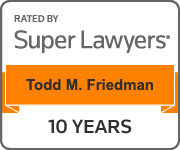If you’re like most Americans, keeping your job is essential if you want to pay the bills. You put in the time and effort at work to remain a valuable employee, so you don’t have to worry about getting fired.
That’s why wrongful termination is so devastating. All the work you’ve done is ignored in favor of terminating you for reasons that aren’t just trivial but actively malicious.
However, the law is on your side. If you’ve suffered from a genuinely wrongful termination, you can hold your former employer accountable for their actions. Here’s what you need to know about what counts as wrongful termination and how you can fight back.
At-Will Employment and Wrongful Termination
Every state in the US permits “at-will” employment. Unlike many other countries, the US allows both employers and workers to end the working relationship at any time, for almost any reason. Under at-will employment, workers have the freedom to quit jobs with no notice and for no reason. However, these laws also permit employers to fire workers just as quickly.
Employers do have a few more limitations than workers, of course. Companies are bound by laws like the Civil Rights Act, the Americans with Disabilities Act (ADA), and other anti-discrimination legislation. Under these laws, as long as someone can perform their job adequately, businesses can’t fire them for being part of a protected class.
Similarly, federal and state labor codes are clear that businesses can’t fire someone for obeying the law. If someone’s performance is on par with other employees, firing them for following OSHA regulations or reporting the company to the state labor board is illegal.
However, while it’s illegal to fire someone for these reasons, a company can fire people for no reason at all. This is where things can get complicated. It’s not always clear whether termination is truly wrongful. It’s even more challenging for wrongfully terminated workers to prove their claims without legal help.
When Wrongful Termination May Be Relevant
How can you tell if you’ve been wrongfully terminated? There are four primary situations in which unlawful termination is found to take place.
- Broken contracts: While every state allows at-will employment, they also permit companies to write contracts with other terms of employment. Many union jobs and high-level roles come with contracts requiring employers and employees to fulfill certain conditions before ending the working relationship. For instance, some of these contracts may only permit a company to fire a worker if they break the law or violate specific internal policies. If the company breaks this contract and fires a worker anyway, it’s considered wrongful termination.
- Discrimination: Under no circumstances may a business fire an employee for their race, religion, gender, age, citizenship, family, genetic information, or disability as long as the worker can still perform their role effectively with reasonable accommodations. Firing someone for these traits is discriminatory unlawful termination.
- Retaliation: Some unscrupulous supervisors will threaten to fire workers to get what they want. For instance, a common form of sexual coercion in the workplace involves threatening someone’s employment if they don’t provide sexual favors. If the supervisor follows through on these threats, they have committed retaliatory wrongful termination.
- Whistleblower retaliation: A critical subset of retaliation is firing someone for following the law. If a business fires an employee to punish them for reporting labor code or safety violations, it has wrongfully terminated them.
Suppose you’ve been fired for being a member of a protected class, for doing the right thing, or in violation of an existing contract. In that case, you may have grounds for a wrongful termination lawsuit.
Fighting Back Against Wrongful Termination
So, what happens if you think you’ve been wrongfully terminated? The obvious answer is that you should take your former employer to task for breaking the law. You can sue your employer for damages, including back pay, benefits, and pain and suffering.
To give yourself the greatest chance of success, there are three steps you need to take:
- Determine why you think your firing was unlawful: To have a case, you need to meet one of the standards for wrongful terminations. Think back to how you were treated by other people at your workplace. If you faced harassment or discrimination before you were fired, particularly by those responsible for firing you, then it’s more likely you were fired illegally.
- Get legal help: Next, reach out to an experienced employment law attorney. They can help you examine your situation and determine whether you have grounds for a wrongful termination lawsuit.
- Build your case: With your attorney, collect evidence for your claim. This can include harassing or retaliatory communications you received and proof of discriminatory behavior elsewhere in the company. Your lawyer can help you determine what evidence will stand up in court and support your claims.
By taking these steps, you have a better chance of convincing a judge and jury that your employer had no right to fire you.
Lawsuits like these aren’t just about you, either. They’re also about showing businesses that they can’t act with impunity. The more people hold unscrupulous companies accountable for illegal firings, the fewer companies will feel comfortable attempting them. By making your former employer take responsibility for their actions, you’re standing up for yourself and for the rights of all the people they employ or will hire in the future.
Taking Back Your Employment Rights
At-will employment may mean that companies can fire workers for no reason, but labor laws mean they can’t fire you for discriminatory reasons. If you’ve been fired for your race, gender, religion, or for following the law, you’ve been wrongfully terminated.
The only solution is to take legal action. Get in touch with the experienced employment lawyers at the Law Offices of Todd M. Friedman, P.C, to discuss your case. They will help you choose the right next steps and fight for your employment rights. Stop wasting time and start fighting back against illegal hiring and firing practices by scheduling your free consultation today.

















